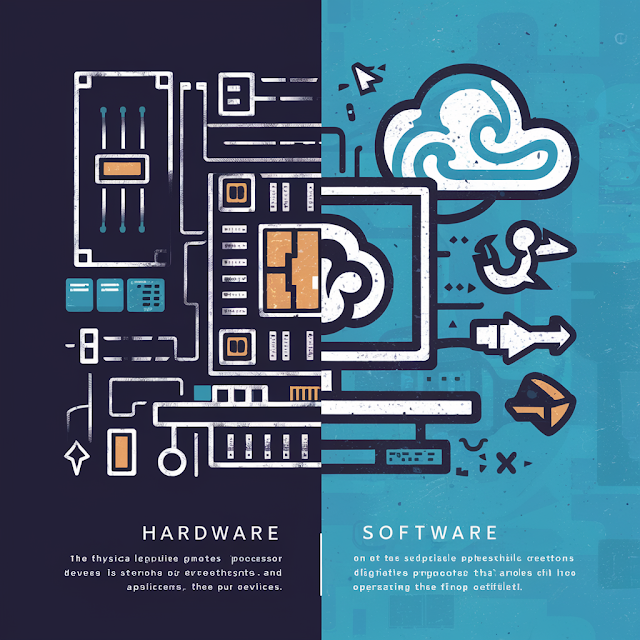What is The Difference Between Hardware And Software ? [ With Example ]
What is The Difference Between Hardware And Software ? [ With Example ]
Hardware and software are two fundamental components of a computer system, each playing distinct roles.
Here's the difference between them with examples:
1. Hardware:
Hardware refers to the physical components of a computer system that you can touch and see. It includes devices such as the central processing unit (CPU), memory (RAM), hard disk drives (HDD) or solid-state drives (SSD), motherboard, graphics card, keyboard, mouse, monitor, and other peripherals.
Example: A CPU (Central Processing Unit) is hardware. It's the actual chip inside your computer that carries out instructions from software programs. It processes data and performs calculations to execute tasks.
2. Software:
Software, on the other hand, is a collection of instructions or programs that tell the hardware what to do. It's intangible, existing as code or programs that are stored electronically on hardware devices. Software controls and coordinates the hardware components to perform specific tasks.
Example: An operating system like Microsoft Windows or macOS is software. It manages computer hardware and provides services for computer programs to run. It handles tasks such as memory management, file management, and communication with hardware devices.
In summary, hardware refers to the physical components of a computer system, while software refers to the programs and instructions that run on the hardware to perform tasks. They work together to enable the functionality of a computer system.
Here are some additional points of differentiation between hardware and software:
1. Nature:
Hardware is tangible and physical, consisting of electronic circuits, components, and mechanical parts.
Software is intangible and abstract, consisting of code, instructions, and data stored electronically.
2. Function:
Hardware performs physical tasks such as processing data, storing information, and interacting with peripherals.
Software controls and directs hardware, enabling it to perform specific tasks and functions.
3. Flexibility:
Hardware is fixed and permanent unless physically modified or upgraded.
Software is flexible and can be easily modified, updated, or replaced without changing the underlying hardware.
4. Examples:
Hardware examples include the CPU, RAM, hard drives, monitors, printers, and other physical components of a computer system.
Software examples include operating systems (Windows, macOS, Linux), applications (Microsoft Office, Photoshop), games, and utilities.
5. Cost:
Hardware typically involves higher initial costs due to the manufacturing of physical components.
Software costs can vary but generally involve lower initial costs for development and distribution.
6. Maintenance and Upgrades:
Hardware maintenance involves physical inspection, repair, and replacement of components.
Software maintenance involves updates, patches, bug fixes, and upgrades that can be applied electronically.
7. Dependency:
Hardware is dependent on software to function properly. Without software instructions, hardware components cannot perform tasks.
Software, while dependent on hardware for execution, can exist independently and can be developed and tested without the need for physical hardware.
Understanding the difference between hardware and software is essential for effectively managing and utilizing computer systems and technology. Both components are integral to the operation and functionality of modern computing devices.
